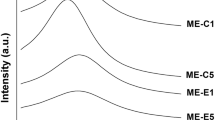Abstract
The permeation characteristics of two model drugs, clonidine (basic) and indomethacin (acidic), were studied by determining their penetration fluxes through hydrated shed snakeskins (Elaphe obsoleta) at 32°C. The drugs were formulated in buffers of different pH's, ranging from 3 to 7. The total penetration fluxes at pH 7.0 for both compounds using skins pretreated with dodecyl N,N-dimethylamino acetate were at least 11 times higher than those of the control runs without enhancer treatment. Equations were derived to calculate the permeability coefficients (K i) and fluxes (J i) for the ionized and the nonionized species to allow for comparison of their penetration ability through the model membrane. The permeability coefficient of clonidine is 2.50 × 10−3 cm/hr for the nonionized form and 2.41 × 10−4 cm/hr for the protonated form. This result indicates that the nonionized form penetrates the skins better than the ionized form. Both permeability coefficient values are 11 times larger than the corresponding values obtained from the control skins. The total flux of clonidine is dependent on its initial concentration in the donor cell but is independent of the ionic strength of the solution formulations. The penetration characteristics of indomethacin are similar to those of clonidine, with a higher permeability coefficient of the nonionized form (3.90 × 10−3 cm/hr) than of the ionized form (7.97 × 10−4 cm/hr) using pretreated skins. While the enhancer shows 24 times penetration enhancement of the ionized form of indomethacin, it does not enhance the penetration of the nonionized species.
Similar content being viewed by others
REFERENCES
O. Wong, J. Huntington, T. Nishihata, and J. H. Rytting. Pharm. Res. 6:000–000 (1989).
T. Higuchi. J. Soc. Cosmet. Chem. 11:85–97 (1960).
A. Martin, J. Swarbrick, and A. Cammarata. Physical Pharmacy, 3rd ed., 1983, p. 403.
O. Wong, N. Tsuzuki, B. Nghiem, J. Kuehnhoff, T. Itoh, K. Masaki, J. Huntington, R. Konishi, J. H. Rytting, and T. Higuchi. Int. J. Pharm. (in press).
Y. W. Chien, H. Xu, C. C. Chiang, and Y. C. Huang. Pharm. Res. 5:103–106 (1988).
P. B. M. W. M. Timmermans and P. A. van Zwieten. Arzeim. Forsch. 28:1676–1681 (1978).
T. Loftsson. Acta Pharm. Suec. 22:209–214 (1985).
M. Siddiqi and W. A. Ritschel. Sci. Pharm. 40:181–189 (1970).
A. S. Michaels, S. K. Chandrasekaran, and J. E. Shaw. Am. Inst. Chem. Eng. J. 21:985–996 (1975).
S. T. Hwang and K. Kammerimeyer. Membrane in Separations, Techniques of Chemistry, Vol. VII, Wiley-Interscience, New York, 1975, p. 34.
O. Wong, S. I. Yang, and J. H. Rytting. Unpublished results.
S. A. Varia, S. Schuller, and V. J. Stella. J. Pharm. Sci. 73:1074–1080 (1984).
Author information
Authors and Affiliations
Rights and permissions
About this article
Cite this article
Flecker, C., Wong, O. & Rytting, J.H. Facilitated Transport of Basic and Acidic Drugs in Solutions Through Snakeskin by a New Enhancer—Dodecyl N,N-Dimethylamino Acetate. Pharm Res 6, 443–448 (1989). https://doi.org/10.1023/A:1015904120430
Issue Date:
DOI: https://doi.org/10.1023/A:1015904120430




